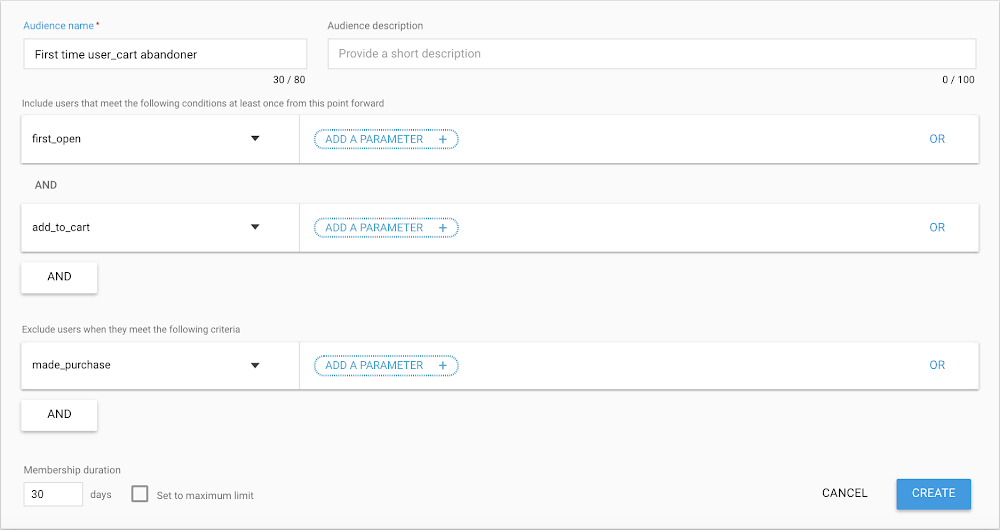For businesses to make the best decisions about where to invest their marketing budget, it’s critical that they understand user behavior on both their web and app properties. And while a website is often the first customer touchpoint, for many businesses, apps are where customers are spending more of their time. As a result, marketers need to capture audience insights from their app analytics that they can then take action on, both within and outside of their apps.
Google Analytics for Firebase, our app analytics solution, has historically given you the ability to organize your audiences around events, device type, and other dimensions. These criteria were not exhaustive, however, or dynamic as user behavior changed over time.
That’s why we’ve made enhancements to the audience builder experience, with a few major updates to help you identify relevant app audiences more easily and with greater precision:
- Dynamic audience evaluation: Audiences are now dynamic by default, meaning Analytics will automatically include users as soon as they meet your criteria, and automatically exclude users when they no longer do. This allows you to “set and forget” your audiences while they populate, without the hassle of constantly re-evaluating them.
- Audience exclusion: Audiences can be more precisely defined by adding exclusion criteria. For example, you can create a list of users that added an item to a shopping cart and of those users, exclude those who have also made a purchase.
- Membership duration: Audiences can now include a membership time frame, such as “users that have converted in the last 30 days,” so your audiences and messaging remain fresh and timely.
These new tools make audiences more powerful, flexible and actionable than before, so you can be confident that your insights reflect relevant users and activity on your apps. In 2019, we will continue to enhance the Google Analytics for Firebase audience builder, offering even more ways to precisely create audiences.
Take action once you’ve identified relevant audiences
Once you’ve improved your understanding of users, you can also deliver personalized experiences based on varying user needs. For example, through push notifications or Remote Config in Firebase, or customized ads in Google Ads.
Let’s say you have an e-commerce app. Using these advanced audience capabilities, you can build an audience of users that visit your app for the first time and add an item to their cart, but don’t make a purchase — and only include those who do so in a 30 day window.

Build a dynamic audience for first time users that have abandoned their cart.
You can now reach that audience with tailored messaging relevant to their experience with the app, and encourage them to make the purchase through an in-app promotion, email notification, or personalized ad. Once these users have returned to the app, made a purchase, and/or exceeded the 30 day window however, they will no longer meet the criteria for that audience, and you will not adversely affect their experience with marketing that is no longer relevant to them.
With the ability to create dynamic audiences, you are able to understand your users with better precision. A better view into your audiences means more insight into the customer journey, so you can invest in your marketing activities with confidence and see better results — keeping users happy, and your app growing.